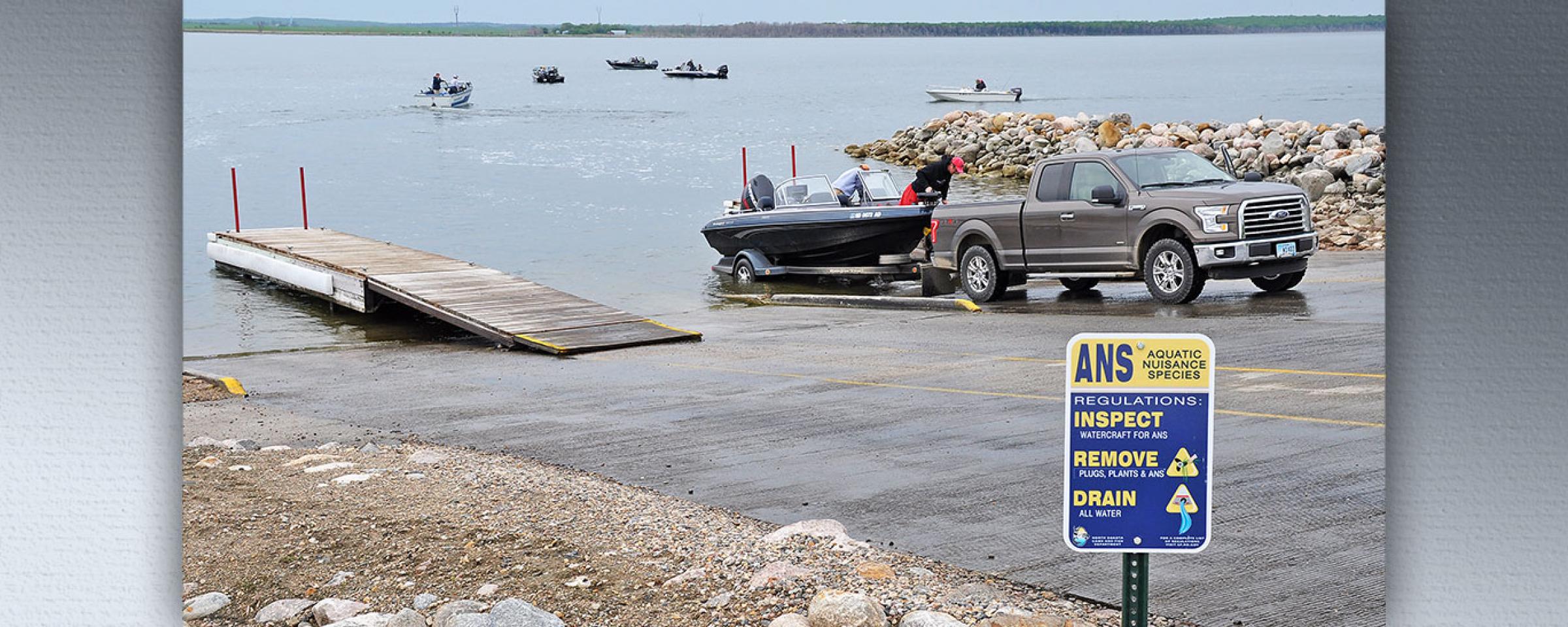
Spreading the Aquatic Nuisance Species Message
By now, most everyone who regularly uses North Dakota’s lakes and rivers for fishing or hunting has heard about aquatic nuisance species. North Dakota currently has only five of these invasive species, and those five are not widespread or causing many problems … yet.
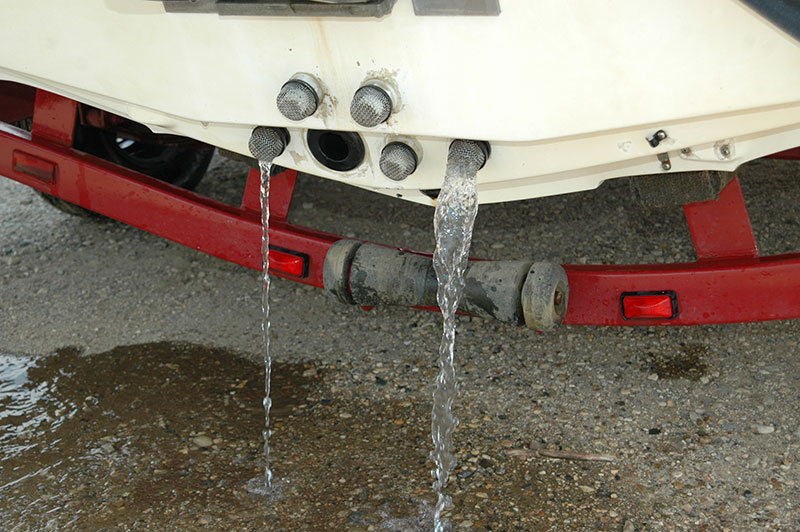
Draining water from a boat.
Most anglers and hunters appreciate the high quality fishing and hunting opportunities in North Dakota, and would like to make sure the few ANS currently here stay contained and that new ones stay out.
Since it is nearly impossible to completely remove ANS once they establish populations, the best option is to prevent ANS from getting into a lake or river in the first place. Whether it’s for fishing, boating, hunting or other purposes, there are common guidelines to prevent the introduction or spread of ANS. These include not moving organisms, such as plants or animals, and not moving water or mud that may harbor organisms from one lake to another.
So how do people know to follow these guidelines?
The North Dakota Game and Fish Department has regulations in place that help, and the agency’s effort to provide information about those regulations has been comprehensive and widespread for the past decade or so.
In addition, most other states and Canadian provinces have similar laws, but methods for spreading the word can vary. For instance, anyone traveling in other states may have seen the slogans “Clean Drain Dry,” “Stop Aquatic Hitchhikers,” “Play Clean Go,” “Clean Drain Dispose,” or several others.
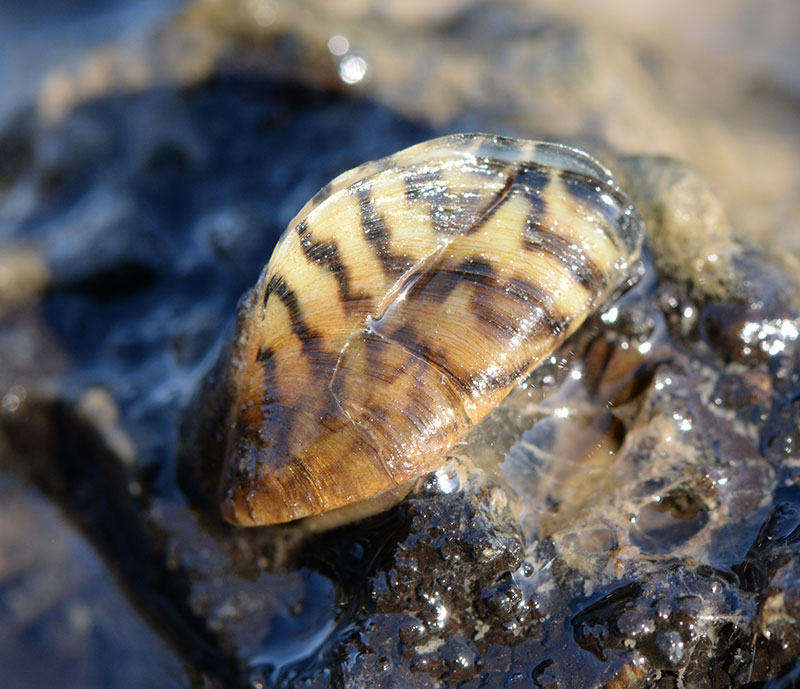
An adult zebra mussel.
The Game and Fish Department is going to start incorporating a couple of those slogans into future communications efforts. “Clean Drain Dry” is widely recognized and addresses the important additional step of drying or disinfecting boats and other equipment. This step has not been included in the “Inspect Clean Drain” message that Game and Fish has used for years.
While clean and drain are legal requirements, it is important to point out that drying is not a law, just a strong recommendation that greatly reduces the likelihood of transporting live organisms that might have been missed in the cleaning and draining process.
Game and Fish is also going to start using the “Stop Aquatic Hitchhikers!” logo on North Dakota ANS educational materials. This national campaign supports the use of “Clean Drain Dry” and is recognized across the country.
North Dakota Game and Fish is not proposing any new regulations at this time.
If all North Dakota water users – anglers, boaters, waterfowl hunters and swimmers – follow these three simple steps, we can protect our waters from the impacts of ANS:
- Clean – Inspect all recreational and commercial equipment (boats, trailers, fishing gear, waders, duck decoys, etc.) and remove any plants or animals that may be present. It is illegal to have ANS or vegetation on your equipment when leaving a waterbody.
- Drain – Remove all water. Not only is this a regulation, but water can hold microscopic organisms that may grow and damage your equipment over time. Leave drain plugs out and draining devices open during transport in North Dakota to avoid a citation.
- Dry – Although not required by North Dakota law, it’s a good idea to allow equipment to dry completely or disinfect with high pressure hot water (140 degrees Fahrenheit for 10 seconds of contact) before using again. For reference, hot tap water is usually about 120 degrees Fahrenheit. Hand washing with hot tap water also disinfects, but requires 5 minutes of continuous contact for each surface.
Other simple steps you can take include using native species for ponds or water gardens, not releasing unwanted pets or aquarium plants into the wild, and reporting any new findings to the Game and Fish Department.
For more information on ANS, regulations, or to report a species, visit gf.nd.gov/ans.
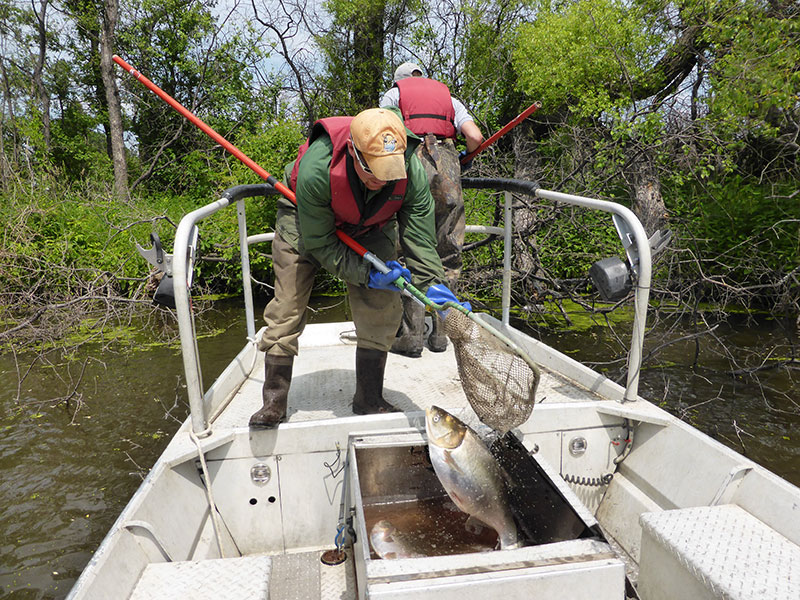
Silver carp removed from the James River.
ANS Regulations
The North Dakota Game and Fish Department is committed to protecting the state’s natural resources, while still providing opportunities to enjoy those resources, as reflected in the ANS regulations:
- All aquatic vegetation must be removed from all equipment before leaving a body of water.
- Live aquatic bait, or aquatic vegetation, may not be transported into North Dakota.
- All water must be drained from boats and other watercraft, including bilges, livewells, baitwells and motors before leaving a water body.
- All drain plugs and water draining devices must be open on all watercraft and equipment during any out-of-water transport.
Anglers may not transport live bait in any water away from Class I ANS infested waters (currently only the Red River). In all other waters, live bait may be transported in containers of 5 gallons or less. Remember that dumping bait in the water, or on shore, is illegal at any water body.
ANS in North Dakota
Aquatic nuisance species are nonnative species that live in or near water and can threaten the ecosystem, economy or human activities. In North Dakota, known ANS include curly leaf pondweed, Eurasian water milfoil, common carp, silver carp and zebra mussels.
Curly leaf pondweed is an invasive plant that grows quickly, forming dense mats that shade out native aquatic plants and makes recreation difficult. It can be transported as plant fragments, and is currently found in the Missouri River System and a few isolated lakes throughout North Dakota.
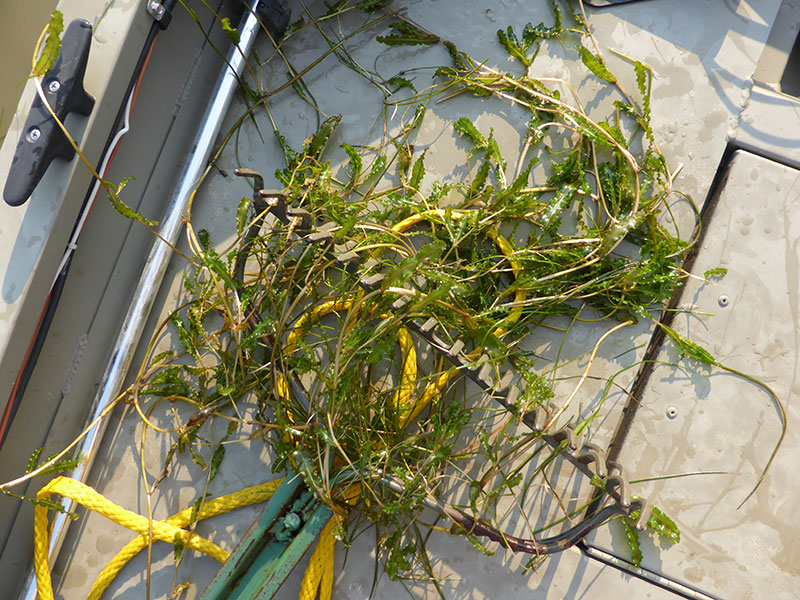
Curly leaf pondweed taken from a lake.
Eurasian water milfoil is an invasive plant used in aquariums and water gardens that has similar effects and transport methods as curly leaf pondweed. It is currently found in Lake Ashtabula and just below in the Sheyenne River.
Common carp are large-bodied invasive fish that uproot vegetation and stir sediment, decreasing water quality and habitat for native species. Carp are often moved as ornamental fish (koi) or bait, and are currently found in many North Dakota waters.
Silver carp are large-bodied invasive fish that can compete with native fish, invertebrates and mussels for food, and can leap up to 10 feet out of the water when disturbed. They spread through upstream migrations and transport as bait, and are currently only found in the James River up to the Jamestown Reservoir dam.
Zebra mussels are small, triangular bivalves that affect the ecosystem through filter-feeding, recreation through fish and waterfowl population declines, and the economy by fouling and damaging infrastructure for power and water industries. They can be spread as adults attached to equipment, or as microscopic larvae in water. Zebra mussels are currently found in the Red River.
